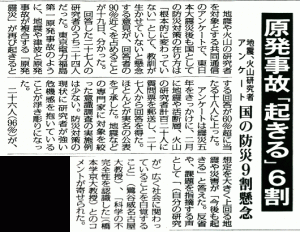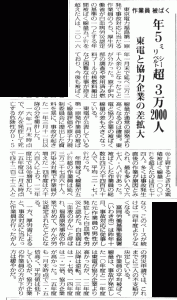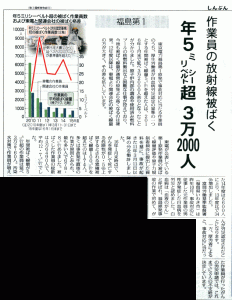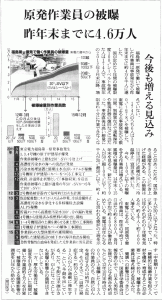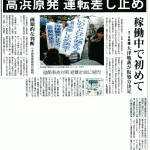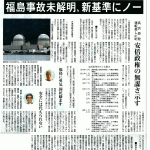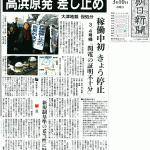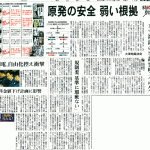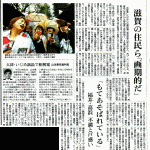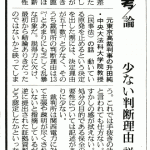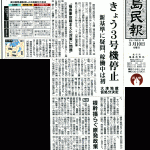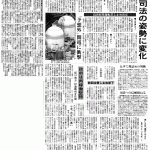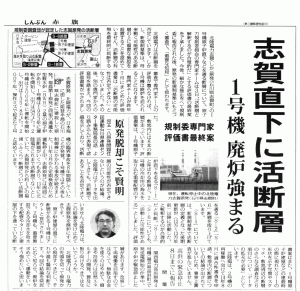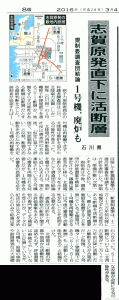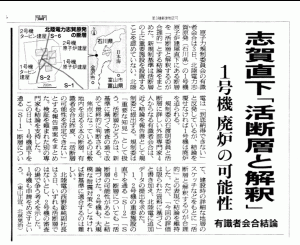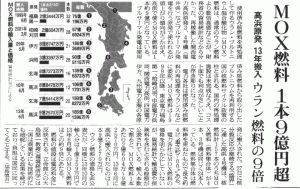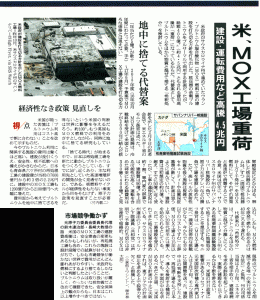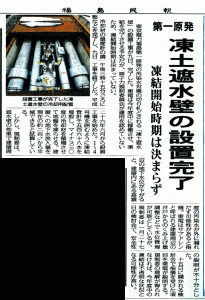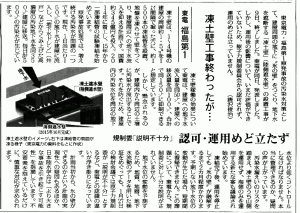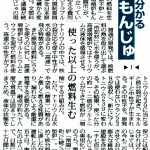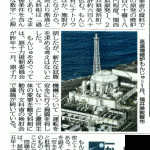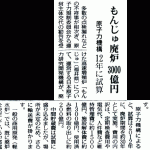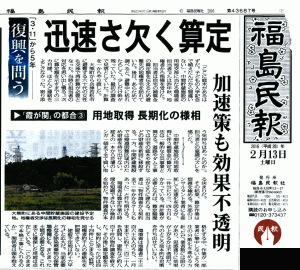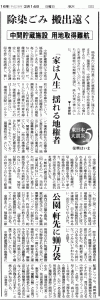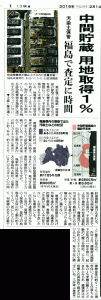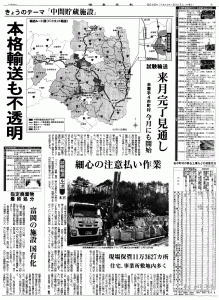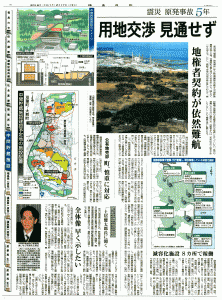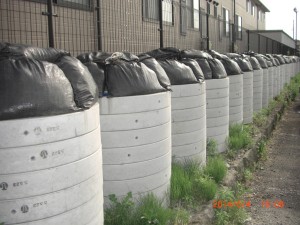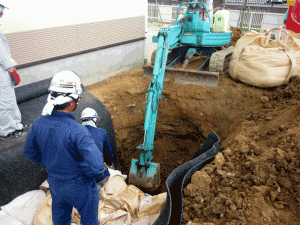Original Japanese written by staffer
The English below written and arranged by Heeday, based on the original Japanese
The English edited by Rev. Dr. Henry French, ELCA
Article from the March 25th, 2016 edition of the Asahi Shimbun newspaper
This April marks the 30th year since one of worst nuclear power plant (NPP) accidents in history hit the Chernobyl NPP, in Ukraine. On March 23rd, 2016, the “new shelter” (new safe confinement), currently under construction, was shown to the press.
The European Bank for Reconstruction and Development (EBRD), which is financing the new confinement construction, showed it to media people from many nations. The new “shelter” is expected to contain radiation for 100 years to come. Still, no one knows when the decommissioning work, including dismantling of the sarcophagus, will be done. There also are worries over how to finance ongoing maintenance and control.
Thirty years since one of the worst NPP disasters ever, at Chernobyl, the “new shelter,” now in construction, was shown to the press.
A gigantic arch standing over —
Unit 4 of the Chernobyl Nuclear Power Station (NPP) exploded on April 26th, 1986, during a test run. The explosion caused fires at the plant. During the 10 days that followed, the NPP released almost six times more radioactive substances than did TEPCO’s Fukushima Daiichi meltdown. The firefighting that followed the Chernobyl disaster killed more than 30 firefighters. The NPP’s surroundings are a no-go zone, even today.
Unit 4 was then sealed with a sarcophagus. The sarcophagus, however, has aged and some decay and structural collapses are presently visible in some of the walls and roof; this can result in radiation leakage. Therefore, the “new shelter”, a gigantic arch in shape, is supposed to cover the entire sarcophagus in order to contain radioactive substances. By the end of this year, the plan goes, the new confinement structure should be moved above the sarcophagus via a railway. Then, at long last, the reactor decommissioning work can begin.
A millennium to go
The new confinement, whose construction began in 2012, is estimated to cost some 1.5 billion euro. It is designed to withstand earthquakes and tornados, and to contain radioactive substances for a century to come. The specifics of the decommissioning, however, such as how to break down the sarcophagus, have yet to be determined. Another headache is how to finance the maintenance of such a gigantic structure. Moreover, the radioactive substances inside the sarcophagus, judging from their half-lives, will remain a serious threat for at least another millennium, which means they will have to build a new confinement structure at least ten times.
Thus, the decommissioning is a long and winding way, extending way far beyond the horizon.
40 years? Really??
Meanwhile, some people say decommissioning Fukushima Daiichi will take four decades or so. Is that really possible?
Mr. Hiroaki Koide, formerly an associate professor at Kyoto University’s Research Reactor Institute, says, “The most crucial issue is to how to collect the melted down nuclear fuel. Currently, we have yet to find out the condition of the fuel since neither a human nor a robot can get close to it. Probably, the only ultimate solution will be to confine the fuel under a sarcophagus.” (quoted from the Chunichi Shimbun, December 9th, 2015)
Also, how much time, money, and how many workers will be necessary before the decommissioning is done? God alone knows.
No-human lands?
Now’ Japan’s government is lifting the evacuation orders on more municipalities around Fukushima Daiichi. Yet most of those “returning home” are elderly people. Few young ones are going home. Many are concerned, therefore, that when the decommissioning is done at long last, the surrounding areas could turn out to be empty places with no inhabitants.
The Japanese author’s concerns and wish
I am a resident in (a less contaminated area of) Fukushima. Ever since March, 2011, I have witnessed, with my own eyes and ears, how much harm radiation does.
The meltdown and its aftermath are still right here. I hope more readers will become serious about these issues. Also, I hope more people will visit Fukushima and see what is happening here.

